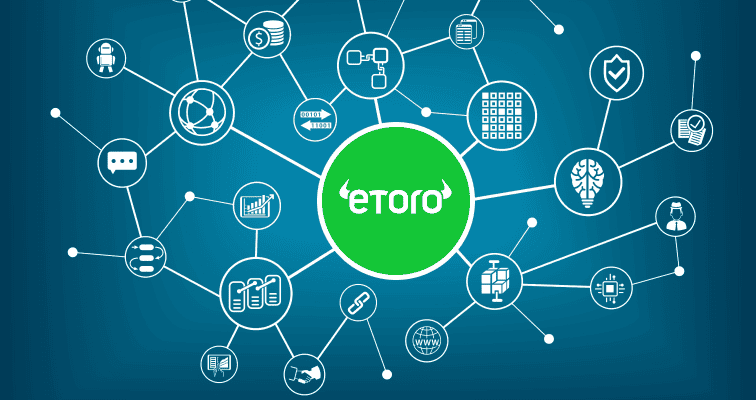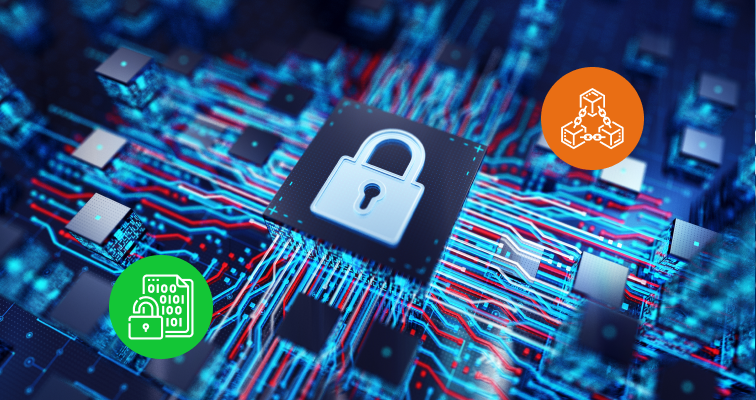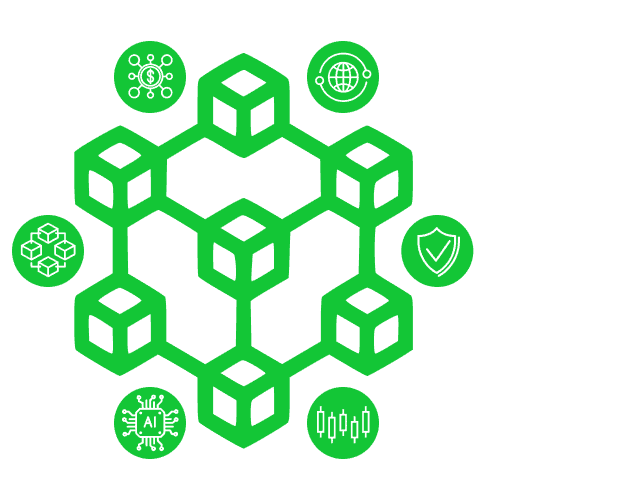Understanding blockchain technology is a crucial part of learning about cryptocurrencies and other cryptoassets. At first glance, you might be put off by the complicated nature of the blockchain, but research is one of the key attributes of a successful investor, and cryptoassets could be a good option for portfolio diversification. For those interested in learning about crypto, we explain what blockchain is and how it works.
What Is Blockchain Technology?
By definition, a blockchain is an immutable, distributed digital ledger. Put more simply, a blockchain is a digital record of transactions or data. This data cannot be altered and is stored in multiple places on a computer network. The immutability, or unchangeable nature of the ledger, means it is always accurate, while the distributed aspect helps to protect the network from malicious attacks.
“Just as the internet upended how we share information, blockchain has the potential to revolutionize how we exchange value, transfer ownership, and verify transactions.”
JPMorgan

How Does Blockchain Work?
Data is stored on the ledger in a “block,” which basically functions as a container of information. Blocks have a specific storage capacity, and when one is filled, it is linked to the previous block and a timestamp is generated. Over time, as more blocks are created, a chain of data is formed, hence, the term “blockchain.”
Blocks: These are clusters of data that function as links in a chain. Blocks contain two important numbers: nonces and hashes. Nonces are 32-bit whole numbers that are generated as soon as a block is created. Hashes are 256-bit numbers used to identify a specific block’s data, almost like a digital fingerprint. Once a block is complete, its nonce generates a hash, and the block is considered signed and permanently bound to those numbers. This makes the block, and the data contained within it, cryptographically secure.
Nodes: These are devices — computers or servers in the network — that are able to participate in a blockchain. Nodes determine whether the data in a blockchain is valid, using a set of rules agreed on by the network. Any actions made must be approved by the majority of the blockchain’s remaining nodes. For example, if a node creates a new block, it is sent to every other node on the network to validate and confirm that it has not been altered. This agreement is called a “consensus” and helps to explain why blockchains are so secure.
Tip: Blockchain is not a cryptocurrency or a programming language — it is a technology. Blockchain plays an essential role within the cryptocurrency space, but the two are separate entities.
How Do Blockchains Achieve Consensus?
There are different ways for blockchains to achieve consensus. The primary two consensus mechanisms are Proof of Work (PoW) and Proof of Stake (PoS).
Proof of Work (PoW): Proof of Work was the first system used to validate blocks in a blockchain, and is the protocol used by Bitcoin and, previously, Ethereum. Proof of Work uses mining to create new blocks. Miners, or validators, must compete to find the correct nonce-hash combination of a particular block, which functions like a digital key. The first person to find the correct nonce-hash, using computational power and advanced software, validates it and permanently records the data onto the ledger. The successful validator receives a small amount of the blockchain’s native cryptocurrency as a reward.
Proof of Stake (PoS): There are different types of Proof of Stake blockchains. Most commonly, a PoS consensus mechanism involves node operators offering cryptocurrency as collateral. This collateral is usually the cryptocurrency native to that blockchain, and the process is referred to as “staking.” Those that have staked cryptocurrency are entered into a lottery for the chance to validate the next block in the chain.

Blockchain and Cryptocurrency
Blockchain is the essential technology behind cryptocurrency. Although blockchain can be used to store a range of data, it is best known for storing and verifying cryptocurrency transactions. For example, the Bitcoin blockchain contains a record of every bitcoin transaction ever completed.
Cryptocurrencies are designed to be secure, decentralised and transparent. Blockchain technology enables all three of these things.
| Secure | Blockchain is based on consensus and cryptography, making information about cryptocurrency transactions almost impossible to tamper with. |
| Decentralised | Blockchains are trustless, meaning all cryptocurrency transactions must be verified by a majority of network participants. Most cryptocurrencies are, therefore, not run by a central point of control, like fiat currencies. |
| Transparent | It is possible to view and trace all historic cryptocurrency transactions on a blockchain, making them fully accessible and auditable. |
Tip: Although it is possible to view all historic transactions on a blockchain, they are anonymised. This makes it impossible to trace specific transactions back to the sender or receiver.
Is Blockchain Safe?
No technology is ever fully secure. However, a blockchain has the potential to be safer than traditional networks. Every block has a unique address and a link to the previous block in the chain, making them easily traceable and hard to tamper with. There are several other key aspects of blockchain technology that make it so secure:
- Immutable (unchangeable): Once data blocks have been added to the database, they cannot be changed. This means that malicious users, or hackers, cannot amend data for their own financial benefit.
- Consensus: Because transactions are verified according to the blockchain’s consensus mechanism, fraudulent transactions are easily avoided.
- Encryption: The blockchain is secured using financial-grade, public key encryption, making access incredibly difficult.
“A blockchain is a digital record of transactions or data. This data cannot be altered and is stored in multiple places on a computer network.”

Final Thoughts
Understanding blockchain is an important part of learning about cryptocurrencies and other cryptoassets. Although complicated, it’s clear what benefit blockchain technology has and will continue to have. Whether you’re interested in protecting your data, removing control from traditional banking institutions or increasing financial transparency, blockchain has the potential to change the way we store, record and utilise data in the future.
To learn more about blockchain technology and cryptocurrencies, visit the eToro Academy.
FAQs
- How is blockchain used?
-
Blockchain technology allows a network of participants to share data without fear of it being tampered with or altered. Primarily, blockchains are used to store data from monetary transactions, but it does have other potential uses.
Blockchain can be integrated with banks to speed up transaction processing times. It can store healthcare and property records securely, track and authenticate the origins of food products, and has the potential to facilitate a tamper-proof voting system.
- Who invented blockchain?
-
Blockchain technology was first conceptualised in 1990 by Stuart Haber and Scott Stornetta. The pair wanted to solve the problem of digital document authentication, and wrote a paper called: “How to Timestamp a Digital Document,” demonstrating how a timestamp verification system would work. This process was expanded upon in 2009 in the Bitcoin whitepaper: “Bitcoin — A Peer to Peer Electronic Cash System,” written by Satoshi Nakamoto.
- What is decentralised finance?
-
Decentralised finance, frequently referred to as DeFi, describes the shift away from traditional financial systems. DeFi is enabled by decentralised technologies, such as blockchain, and aims to create a universally accessible economy that is owned and operated by the public, rather than financial institutions.
This communication is for information and education purposes only and should not be taken as investment advice, a personal recommendation, or an offer of, or solicitation to buy or sell, any financial instruments.
This material has been prepared without taking into account any particular recipient’s investment objectives or financial situation and has not been prepared in accordance with the legal and regulatory requirements to promote independent research. Any references to past or future performance of a financial instrument, index or a packaged investment product are not, and should not be taken as, a reliable indicator of future results.
eToro makes no representation and assumes no liability as to the accuracy or completeness of the content of this publication.


